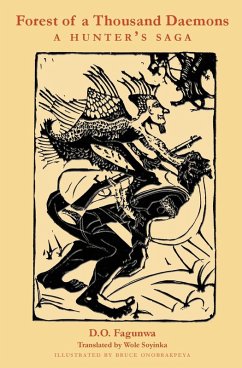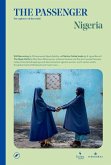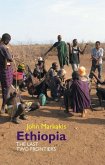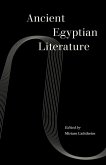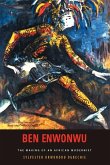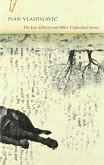D.O. FagunwaA Hunter's Saga
Forest of a Thousand Daemons
A Hunter's Saga
Illustrator: Onobrakpeya, Bruce / Übersetzer: Soyinka, Wole
19,99 €
inkl. MwSt.
Versandfertig in 2-4 Wochen

10 °P sammeln
D.O. FagunwaA Hunter's Saga
Forest of a Thousand Daemons
A Hunter's Saga
Illustrator: Onobrakpeya, Bruce / Übersetzer: Soyinka, Wole
- Broschiertes Buch
- Merkliste
- Auf die Merkliste
- Bewerten Bewerten
- Teilen
- Produkt teilen
- Produkterinnerung
- Produkterinnerung
The first novel written in the Yoruba language and one of the first to be written in any African language.
Andere Kunden interessierten sich auch für
![The Passenger: Nigeria The Passenger: Nigeria]() VariousThe Passenger: Nigeria16,99 €
VariousThe Passenger: Nigeria16,99 €![Ethiopia Ethiopia]() John MarkakisEthiopia39,99 €
John MarkakisEthiopia39,99 €![Ancient Egyptian Literature Ancient Egyptian Literature]() Ancient Egyptian Literature41,99 €
Ancient Egyptian Literature41,99 €![Ben Enwonwu Ben Enwonwu]() Professor Sylvester Okwunodu Ogbechie (Customer)Ben Enwonwu31,99 €
Professor Sylvester Okwunodu Ogbechie (Customer)Ben Enwonwu31,99 €![The Daemons of Devil's End The Daemons of Devil's End]() Sam StoneThe Daemons of Devil's End18,99 €
Sam StoneThe Daemons of Devil's End18,99 €![The Loss Library and Other Unfinished Stories The Loss Library and Other Unfinished Stories]() Ivan VladislavicThe Loss Library and Other Unfinished Stories14,99 €
Ivan VladislavicThe Loss Library and Other Unfinished Stories14,99 €![The poetical works of William Blake (Volume I) The poetical works of William Blake (Volume I)]() William BlakeThe poetical works of William Blake (Volume I)31,99 €
William BlakeThe poetical works of William Blake (Volume I)31,99 €-
-
-
The first novel written in the Yoruba language and one of the first to be written in any African language.
Hinweis: Dieser Artikel kann nur an eine deutsche Lieferadresse ausgeliefert werden.
Hinweis: Dieser Artikel kann nur an eine deutsche Lieferadresse ausgeliefert werden.
Produktdetails
- Produktdetails
- Verlag: City Lights Books
- Seitenzahl: 153
- Erscheinungstermin: 24. September 2013
- Englisch
- Abmessung: 203mm x 131mm x 2mm
- Gewicht: 210g
- ISBN-13: 9780872866300
- ISBN-10: 0872866300
- Artikelnr.: 37273973
- Herstellerkennzeichnung
- Libri GmbH
- Europaallee 1
- 36244 Bad Hersfeld
- gpsr@libri.de
- Verlag: City Lights Books
- Seitenzahl: 153
- Erscheinungstermin: 24. September 2013
- Englisch
- Abmessung: 203mm x 131mm x 2mm
- Gewicht: 210g
- ISBN-13: 9780872866300
- ISBN-10: 0872866300
- Artikelnr.: 37273973
- Herstellerkennzeichnung
- Libri GmbH
- Europaallee 1
- 36244 Bad Hersfeld
- gpsr@libri.de
About D.O. Fagunwa In 1938, entering a literary contest of the Nigerian education ministry, Daniel O. Fagunwa wrote Forest of a Thousand Daemons, one of the first novels to be written in any African language. Fagunwa was the first Nigerian writer to employ folk philosophy in telling his stories and his influence on Nigerian literature is profound, most notable in the works of Amos Tutuola. Fagunwa studied at St. Luke's School and St. Andrew's College in Nigeria, before becoming a teacher himself. In 1959, he was made a Member of the Order of the British Empire. He died in 1963 and remains the most widely-read Yorùbá-language author. About Translator Wole Soyinka Akinwande Oluwole "Wole" Soyinka is a Nigerian writer, notable especially as a playwright and poet; he was awarded the 1986 Nobel Prize in Literature, the first person in Africa and the diaspora to be so honored. Soyinka has remained active in Nigeria's political history and its struggle for independence from Great Britain. In 1967 during the Nigerian Civil War, he was arrested by the federal government of General Yakubu Gowon and put in solitary confinement for two years. It is there that he translated Forest of a Thousand Daemons. Soyinka has taught at Cornell, Oxford, Harvard, Yale, and Emory University, where in 1996 he was appointed Robert W. Woodruff Professor of the Arts. With civilian rule restored to Nigeria in 1999, Soyinka returned to his nation. About Illustrator Bruce Onobrakpeya A world-renowned artist, Bruce Onobrakpeya is best known for his printmaking, painting and sculptures. He has exhibited at the Tate Modern in London, the National Museum of African Art of the Smithsonian Institution in Washington, D.C. and the Malmö Konsthall in Malmö, Sweden. In 1990 he participated in the 44th Venice Biennale where he received an honorable mention. He has received awards from the University of Ibadan, the Solidra Circle award, the Living Human Treasure Award given by UNESCO, and is the second winner of the prestigious Nigerian Creativity Award by the Federal Government of Nigeria. Its first winner was Chinua Achebe. Onobrakpeya is a founding member of the Society of Nigerian Artists.
Translator's Introduction
Glossary of Yoruba and unfamiliar terms
Chapter One: The Author Meets Akara-Ogun
Chapter Two: First Sojourn of Akara-Ogun In The Forest of A Thousand
Daemons
Chapter Three: Second Sojourn of Akara-Ogun In The Forest of A Thousand
Daemons
Chapter Four: The Expedition To Mount Langbodo
Glossary of Yoruba and unfamiliar terms
Chapter One: The Author Meets Akara-Ogun
Chapter Two: First Sojourn of Akara-Ogun In The Forest of A Thousand
Daemons
Chapter Three: Second Sojourn of Akara-Ogun In The Forest of A Thousand
Daemons
Chapter Four: The Expedition To Mount Langbodo
Translator's Introduction
Glossary of Yoruba and unfamiliar terms
Chapter One: The Author Meets Akara-Ogun
Chapter Two: First Sojourn of Akara-Ogun In The Forest of A Thousand
Daemons
Chapter Three: Second Sojourn of Akara-Ogun In The Forest of A Thousand
Daemons
Chapter Four: The Expedition To Mount Langbodo
Glossary of Yoruba and unfamiliar terms
Chapter One: The Author Meets Akara-Ogun
Chapter Two: First Sojourn of Akara-Ogun In The Forest of A Thousand
Daemons
Chapter Three: Second Sojourn of Akara-Ogun In The Forest of A Thousand
Daemons
Chapter Four: The Expedition To Mount Langbodo
